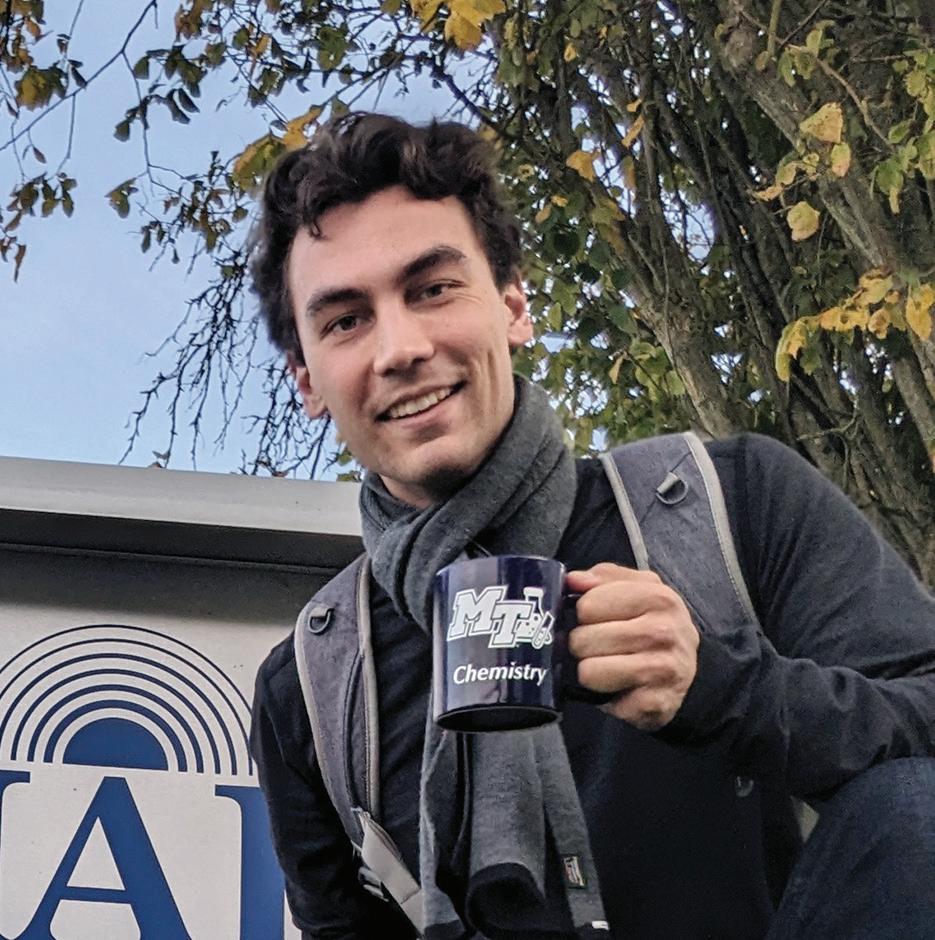
3 minute read
An Atmosphere of Change
MTSU grad Jared Frazier launches his computational science career abroad to impact weather and climate research across the globe
Jared Frazier’s new address in the small, seaside town of Kühlungsborn, Germany, is about 4,500 miles away from his roots in Spring Hill, Tennessee. It’s his latest stop on an exciting international journey of leading-edge weather and climate research and personal discovery.
A 2022 MTSU graduate who earned a master's in the Netherlands, Frazier was hired in September 2024 as a computational scientist at the Leibniz Institute of Atmospheric Physics (IAP). His employer is one of 96 independent institutes under the umbrella of the Leibniz Association.
Frazier is enjoying a hands-on opportunity to interact with the ICON model—one of the world’s leading high-resolution computer modeling frameworks for weather, climate, and environmental prediction. It provides a nearly homogeneous coverage of the globe—for better, faster predictions of routine and severe weather events, particularly in Europe.

The IAP conducts research mainly on the middle atmosphere, particularly on the mesosphere and lower thermosphere (approximate altitude of 31 to 124 miles), as well as on the dynamic coupling between atmospheric layers at different altitudes from the troposphere—which starts at the Earth’s surface and extends 5 to 9 miles—to the thermosphere. Between these two locations are the stratosphere, or the ozone layer, and on top of it the mesosphere, where meteors burn up. The focus of this area is to research the dramatic changes the terrestrial atmosphere is experiencing.
There are growing needs for operational weather forecasts of the atmosphere that extend beyond heights of about 62 miles. The rapid development of the civil, commercial, and military use of space requires an increasingly precise determination of trajectories for rockets, satellites, space debris, and controlled reentry scenarios.

Frazier said his daily life “consists primarily of talking with scientists at the institute about what their workflows look like regarding downloading, preprocessing, running computer simulations, and post-processing. Then, I code up software solutions, including usage documentation, that can be used by our institute’s scientists.”
Because of Frazier’s software engineering background and high-performance computing training, his work translates practically into a scenario where previously a scientist might have to wait four or more hours to process data and then visualize it using scripts, to recently only having to wait about 30 minutes, not to mention the energy savings.
Outside Frazier’s work window, he can view the Baltic Sea. When not working, Frazier says, he is usually biking along the coast or to nearby towns, reading books, or listening to German podcasts, “with the strong winds and hypnotic crashing of the waves in the background while walking along the coast.”
What’s next for Frazier? One certainty: The sky’s no limit for his future trajectory.
—Patsy B. Weiler











